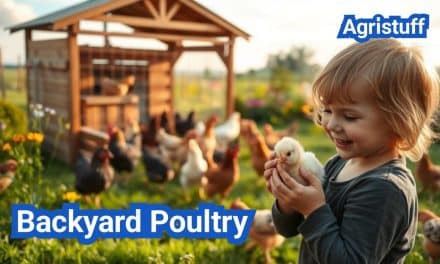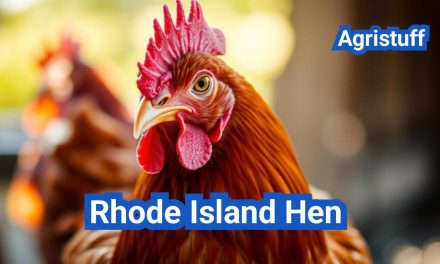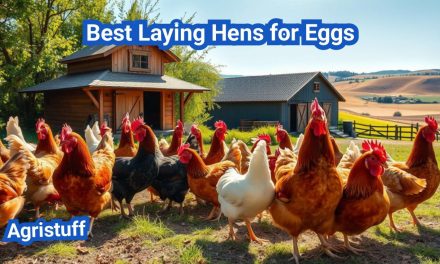Raising chickens for eggs ( Best Egg Laying Chickens ) can be a rewarding experience, but it’s crucial to choose breeds that are known for their high production capabilities. With numerous breeds available, selecting the right one can be overwhelming.
The right breed can significantly impact the number of eggs your chickens produce. Factors such as breed characteristics, nutrition, and management practices all play a role in determining egg-laying capabilities.
Key Takeaways
- Choosing the right breed is crucial for maximizing egg production.
- Different breeds have varying egg-laying capabilities.
- Nutrition and management practices impact egg production.
- High production breeds can significantly increase your egg yield.
- Understanding breed characteristics is key to successful egg production.
Understanding Chicken Egg Production
To optimize egg laying, it’s essential to comprehend the various factors that affect chicken egg production. Egg laying is a complex process influenced by a combination of genetics, nutrition, health management, and environmental conditions.
Factors That Affect Egg-Laying Potential | Best Egg Laying Chickens
Several key factors can significantly impact a chicken’s egg-laying potential. These include:
- Genetics: The breed and lineage of a chicken play a crucial role in determining its egg-laying capabilities. Some breeds are specifically bred for high egg production.
- Nutrition: A balanced diet that includes adequate protein, calcium, and other essential nutrients is vital for maintaining high egg production.
- Health Management: Regular health checks, vaccinations, and parasite control measures are necessary to prevent diseases that can reduce egg laying.
- Environmental Conditions: Factors such as temperature, humidity, and lighting can significantly affect egg production. Chickens typically lay more eggs in comfortable, stress-free environments.
As noted by poultry experts, “The interaction between genetics, nutrition, and management practices determines the overall productivity of a flock” (
Poultry Science Association
Average Egg Production Expectations | Best Egg Laying Chickens
Average egg production varies significantly among different breeds. Here’s a general overview:
| Breed | Average Eggs per Year |
|---|---|
| Leghorn | 280-300 |
| Rhode Island Red | 200-220 |
| Australorp | 250-300 |
Understanding these factors and expectations can help backyard chicken keepers and commercial producers alike in making informed decisions about their flock.
What to Consider Before Choosing Egg Laying Chickens

To maximize egg production, it’s crucial to evaluate your climate, space, and production objectives before choosing chickens. The right decision depends on several key factors that impact the health, happiness, and productivity of your flock.
Climate and Environment Factors | Best Egg Laying Chickens
The climate and environment in which your chickens will live play a significant role in their ability to produce eggs. Extreme temperatures can stress chickens, leading to decreased egg production. For instance, in hot climates, it’s essential to provide adequate shade and ventilation to keep your chickens cool. Conversely, in colder climates, ensuring they have a warm, draft-free coop is vital.
Moreover, the environment should be free from predators and disease vectors. A safe and healthy environment not only improves egg production but also enhances the overall well-being of your chickens.
Space and Housing Requirements | Best Egg Laying Chickens
Adequate space is crucial for the health and productivity of your egg-laying chickens. Overcrowding can lead to stress, which in turn can decrease egg production. The general rule of thumb is to provide at least 3-4 square feet per chicken inside the coop and 8-10 square feet per chicken in the outdoor run.
Proper housing is also essential. The coop should be well-ventilated, dry, and protected from the elements. Nesting boxes, one per 3-4 hens, should be provided in a quiet, dark area of the coop to encourage egg laying.
Your Production Goals | Best Egg Laying Chickens
Understanding your egg production goals is vital in selecting the right breed of chicken. If you’re looking for high egg production, breeds like Leghorns or Rhode Island Reds are excellent choices. However, if you’re interested in a dual-purpose breed that provides both eggs and meat, consider breeds like Plymouth Rock or Orpington.
Defining your production goals will help you choose the most suitable breed and manage your flock effectively to meet those goals.
Best Egg Laying Chickens for Beginners
The journey to a bountiful egg harvest starts with choosing beginner-friendly chicken breeds that are both productive and easy to manage. For those new to backyard chicken keeping, it’s essential to select breeds that are not only prolific egg layers but also hardy and low-maintenance.
Temperament and Handling Ease | Best Egg Laying Chickens
When it comes to beginner-friendly chickens, temperament is a crucial factor. Breeds with docile and friendly personalities make it easier for new chicken keepers to handle and care for their flock. The Rhode Island Red and Plymouth Rock are excellent examples of breeds known for their calm and approachable nature.
“Chickens with good temperaments are not only a joy to be around, but they also make it easier to manage your flock, especially for beginners.”
Hardiness and Disease Resistance | Best Egg Laying Chickens
Hardiness and disease resistance are vital characteristics for any chicken breed, especially for beginners who may not have extensive experience in managing chicken health. Breeds like the Australorp and Orpington are renowned for their robust health and ability to thrive in various conditions.
| Breed | Hardiness Level | Disease Resistance |
|---|---|---|
| Australorp | High | Excellent |
| Orpington | High | Good |
| Rhode Island Red | Medium-High | Good |
Low-Maintenance Breeds | Best Egg Laying Chickens
Low-maintenance breeds are ideal for beginners as they require less specialized care. The Leghorn is a prime example of a low-maintenance breed that is also an exceptional egg layer. Their simplicity in care and high production capabilities make them an attractive choice for those starting out.
In conclusion, when selecting egg-laying chickens as a beginner, it’s crucial to consider breeds that offer a combination of good temperament, hardiness, and low maintenance. By choosing breeds like the Rhode Island Red, Plymouth Rock, Australorp, Orpington, and Leghorn, beginners can set themselves up for success in their backyard chicken-keeping journey.
Leghorn: The Champion White Egg Layer

When it comes to high-volume white egg production, Leghorn chickens are often considered the gold standard. Their ability to lay a significant number of eggs annually has made them a popular choice among both commercial egg producers and backyard chicken enthusiasts.
Production Capabilities and Egg Characteristics | Best Egg Laying Chickens
Leghorns are renowned for their prolific egg-laying abilities, with some hens producing over 300 large white eggs per year. Their eggs are not only abundant but also of high quality, with a strong, clean shell and a rich, creamy yolk.
The average Leghorn hen begins laying eggs at around 18 weeks of age and will continue to produce eggs consistently for about a year. Their high production rate makes them an attractive choice for those looking to maximize their egg yield.
Care Requirements and Temperament | Best Egg Laying Chickens
Despite their high production demands, Leghorns are relatively low-maintenance birds. They require a balanced diet, adequate housing, and regular health checks to maintain their health and productivity.
In terms of temperament, Leghorns are known to be active and can be a bit flighty. They are generally not considered to be as docile as some other breeds, but with proper handling from a young age, they can become quite tame.
Overall, the Leghorn chicken is an excellent choice for anyone seeking a reliable and prolific white egg layer. Their combination of high egg production, relatively low maintenance care, and interesting personalities makes them a great addition to many backyard flocks.
Rhode Island Red: The Reliable Brown Egg Producer
Known for their rich, brown eggs, Rhode Island Reds are a popular choice for those seeking reliable egg producers. This breed has gained a reputation for its high egg production and friendly demeanor, making it a favorite among backyard chicken enthusiasts.
Production Capabilities and Egg Characteristics | Best Egg Laying Chickens
Rhode Island Reds are prolific layers, producing an average of 200-220 large, brown eggs per year. Their eggs are not only abundant but also of high quality, with a strong shell and rich, brown color. According to the American Poultry Association, Rhode Island Reds are recognized for their consistent egg production, making them a reliable choice for egg enthusiasts.
A key advantage of Rhode Island Reds is their ability to maintain high egg production throughout their laying cycle. They are also known for their ability to continue laying well into their second year, making them a valuable addition to any backyard flock.
Care Requirements and Temperament | Best Egg Laying Chickens
Rhode Island Reds are known for their friendly and docile nature, making them an excellent choice for families with children. They are relatively low-maintenance birds, requiring a balanced diet and regular care. As noted by poultry experts, “Rhode Island Reds are hardy and adaptable, thriving in a variety of environments.”
“Rhode Island Reds are not only prolific layers but also friendly and easy-going, making them a joy to keep in the backyard.”
To keep Rhode Island Reds healthy and productive, it’s essential to provide them with a nutritious diet, adequate housing, and regular health checks. With proper care, they can thrive and provide a bountiful supply of delicious, brown eggs.
Australorp: The Record-Breaking Layer

The Australorp chicken stands out as a premier egg-laying breed, renowned for its extraordinary productivity. This breed has gained popularity among backyard chicken enthusiasts and commercial producers alike due to its impressive egg-laying capabilities.
Production Capabilities and Egg Characteristics | Best Egg Laying Chickens
The Australorp is celebrated for its ability to lay a high volume of eggs, with some hens producing over 300 eggs per year. The eggs are typically large to extra-large in size and have a light brown to brown color. Their consistent production makes them a reliable choice for those seeking a steady egg supply.
Egg production characteristics of Australorp chickens include:
- High annual egg production
- Large to extra-large egg size
- Light brown to brown egg color
- Consistent laying throughout the year
Care Requirements and Temperament | Best Egg Laying Chickens
Australorp chickens are known for their friendly and docile nature, making them an excellent choice for families and beginners. They are relatively low-maintenance birds, requiring standard care that includes a balanced diet, clean water, and adequate shelter.
Key care considerations for Australorp chickens:
- Provide a balanced diet rich in calcium to support eggshell production
- Ensure access to clean water at all times
- Maintain a clean and secure coop to protect against predators and disease
- Offer enough space for exercise to prevent stress and health issues
By understanding the production capabilities, egg characteristics, and care requirements of Australorp chickens, backyard chicken keepers can make informed decisions about adding this breed to their flock.
Plymouth Rock: The American Heritage Layer

The Plymouth Rock chicken is a beloved American heritage breed known for its impressive egg-laying capabilities and friendly demeanor. As a dual-purpose breed, it’s valued for both its eggs and meat production, making it a versatile choice for backyard chicken keepers.
Production Capabilities and Egg Characteristics | Best Egg Laying Chickens
Plymouth Rock chickens are renowned for their consistent egg production. They lay a significant number of brown eggs annually, typically ranging between 280 to 300 eggs per year. The eggs are generally medium to large in size, with a sturdy shell that ensures good quality.
The breed’s egg-laying capability is one of its most attractive features, making it a favorite among those who keep chickens for eggs. Their production levels remain relatively consistent throughout the year, although, like all chickens, they may experience a slight decrease in production during the winter months unless supplemental lighting is provided.
Care Requirements and Temperament | Best Egg Laying Chickens
Plymouth Rock chickens are known for their hardiness and friendly nature, making them an excellent choice for both novice and experienced chicken keepers. They are relatively low-maintenance birds that adapt well to various environments, provided they have adequate shelter, nutrition, and health care.
In terms of temperament, Plymouth Rocks are generally docile and easy to handle, which makes them suitable for families with children. They are also known to be quite social and get along well with other chickens, making them a great addition to a mixed flock.
Key characteristics of Plymouth Rock chickens include:
- Hardy and adaptable
- Friendly and docile temperament
- Consistent egg production
- Dual-purpose (eggs and meat)
- Brown eggs, medium to large in size
ISA Brown and Golden Comet: Hybrid Egg-Laying Machines

Hybrid egg-laying chickens, such as ISA Browns and Golden Comets, are renowned for their exceptional production capabilities. These breeds have been specifically developed for their high egg-laying potential, making them ideal for backyard chicken keepers and commercial egg producers alike.
Production Capabilities and Egg Characteristics | Best Egg Laying Chickens
ISA Browns are known for their consistent and high-volume egg production. They can lay up to 300-380 large, brown eggs per year. Golden Comets, on the other hand, are also prolific layers, producing around 200-220 large, brown eggs annually. Both breeds are valued for their ability to maintain high production levels throughout their laying cycle.
The eggs produced by these hybrids are not only numerous but also of high quality. They tend to be large to extra-large in size and have a rich, brown color. The strong shells and consistent size make them highly desirable for both personal consumption and sale.
| Breed | Annual Egg Production | Egg Size | Egg Color |
|---|---|---|---|
| ISA Brown | 300-380 | Large to Extra-Large | Brown |
| Golden Comet | 200-220 | Large | Brown |
Care Requirements and Temperament | Best Egg Laying Chickens
Both ISA Browns and Golden Comets are relatively easy to care for, as they are hardy and adaptable to various environments. However, they do require proper nutrition, adequate housing, and regular health checks to maintain their high production levels.
In terms of temperament, ISA Browns are known for being friendly and docile, making them a great choice for families with children. Golden Comets are also generally friendly and can be quite curious. Both breeds are relatively quiet and can adapt well to backyard flocks.
When considering adding these breeds to your flock, it’s essential to research their specific needs and ensure that you can provide the necessary care and conditions for optimal egg production.
Sussex and Orpington: Dual-Purpose Egg Layers

For backyard chicken keepers seeking versatility, Sussex and Orpington breeds stand out as excellent dual-purpose choices. These breeds are valued for their ability to produce a significant number of eggs while also serving as a viable source of meat.
Production Capabilities and Egg Characteristics | Best Egg Laying Chickens
The Sussex chicken is known for its high egg production, laying around 250-300 light brown or speckled eggs per year. They are prolific layers and can continue to produce eggs consistently over several years. The Orpington chicken, on the other hand, lays around 180-200 eggs annually, with a slightly larger egg size compared to Sussex. Orpingtons are known for their gentle nature and are often kept for both eggs and meat.
- Sussex: 250-300 light brown or speckled eggs per year
- Orpington: 180-200 brown eggs per year
Care Requirements and Temperament | Best Egg Laying Chickens
Both breeds are relatively easy to care for, requiring adequate space, nutrition, and health checks. Sussex chickens are friendly, active, and enjoy foraging, making them a great choice for free-range systems. Orpington chickens are known for their calm and docile nature, making them suitable for families with children.
To ensure optimal production, it’s essential to provide these breeds with a balanced diet, adequate shelter, and regular health monitoring. Here are some key care tips:
- Provide a nutritious diet that includes a mix of grains, proteins, and calcium for strong eggshell production.
- Ensure access to clean water at all times.
- Offer adequate space for movement and foraging.
- Regularly inspect the flock for signs of illness or stress.
Wyandotte and Marans: Beautiful Birds with Colorful Eggs

For those seeking both beauty and productivity in their flock, Wyandotte and Marans chickens stand out as exceptional choices. These breeds are not only admired for their stunning plumage but also valued for their unique egg-laying characteristics.
Production Capabilities and Egg Characteristics | Best Egg Laying Chickens
Wyandotte chickens are known for their ability to lay a significant number of eggs, typically in the range of 200-220 per year. Their eggs are usually brown, and some strains may lay eggs with a slight pink or tinted hue. Marans chickens, on the other hand, are famous for their dark, chocolate-brown eggs, which are highly prized by many egg enthusiasts. Marans hens lay around 180-200 eggs annually.
The egg-laying capabilities of these breeds can be influenced by several factors, including nutrition, health, and environmental conditions. Ensuring that your hens receive a balanced diet and proper care can maximize their production potential.
Key Egg-Laying Characteristics:
- Wyandotte: 200-220 brown eggs per year
- Marans: 180-200 dark brown eggs per year
Care Requirements and Temperament | Best Egg Laying Chickens
Both Wyandotte and Marans chickens are considered to be relatively friendly and docile, making them suitable for backyard flocks. However, like all breeds, they have specific care requirements that need to be met to ensure their health and productivity.
Wyandottes are known for their cold hardiness, but they do require adequate shelter and protection from extreme weather conditions. Marans are also relatively hardy, but their dense feathers can make them more prone to heat stress in warmer climates.
Tips for Care:
- Provide a balanced diet rich in calcium to support eggshell production.
- Ensure access to clean water and adequate shelter.
- Regularly inspect your flock for signs of illness or stress.
Heritage vs. Hybrid Egg Laying Chickens: Making the Right Choice

Choosing between heritage and hybrid chickens depends on several factors, including your production goals, available space, and budget. Both types of chickens have their unique advantages and disadvantages, which are crucial to understand before making a decision.
Production Differences | Best Egg Laying Chickens
One of the primary considerations when deciding between heritage and hybrid egg-laying chickens is their production capability. Hybrid chickens are bred specifically for their high egg production, often laying significantly more eggs than heritage breeds.
Hybrid chickens can produce up to 300 eggs per year, thanks to selective breeding programs that focus on enhancing their laying capabilities. In contrast, heritage breeds typically lay between 180 to 200 eggs per year, although this can vary depending on the breed.
| Characteristics | Hybrid Chickens | Heritage Chickens |
|---|---|---|
| Egg Production per Year | Up to 300 eggs | 180-200 eggs |
| Temperament | Generally docile but can be varied | Often friendly and foraging |
| Longevity | Typically 2-3 years of peak production | 5-10 years or more |
Longevity and Sustainability | Best Egg Laying Chickens
Another critical factor is the longevity and sustainability of the chickens. Heritage breeds are known for their longer lifespan and hardiness, often living 5 to 10 years or more, whereas hybrid chickens typically have a shorter productive lifespan, usually around 2 to 3 years.
The sustainability of heritage breeds also extends to their ability to forage and adapt to various environments, making them a more robust choice for backyard farming.
Cost Considerations | Best Egg Laying Chickens
The cost of acquiring and maintaining heritage or hybrid chickens can vary. While hybrid chickens might be more expensive to purchase upfront due to their specialized breeding, their higher egg production can offset the initial cost over time.
Heritage breeds, although potentially less expensive to purchase, may require more time and resources for foraging and care. However, their longer lifespan can make them a more cost-effective option in the long run.
Ultimately, the choice between heritage and hybrid egg-laying chickens should be based on a careful consideration of your specific needs, resources, and preferences.
How to Optimize Your Flock for Maximum Egg Production
To achieve the highest egg production from your flock, it’s crucial to implement strategies that address nutrition, housing, health, and light management. Optimizing these factors can significantly impact the overall productivity and health of your chickens.
Nutrition Strategies for High Egg Production | Best Egg Laying Chickens
Providing the right nutrition is fundamental to maximizing egg production. Chickens require a balanced diet that includes proteins, carbohydrates, vitamins, and minerals. Layer feed is specifically formulated to meet the nutritional needs of laying hens, typically containing 16-18% protein.
A well-balanced diet not only supports egg production but also maintains the overall health of the chickens. It’s also important to ensure access to clean water at all times, as dehydration can significantly reduce egg production.
| Nutrient | Importance for Egg Production | Sources |
|---|---|---|
| Protein | Essential for egg production and overall health | Layer feed, mealworms, soybean meal |
| Calcium | Crucial for strong eggshell production | Crushed oyster shells, limestone, dark leafy greens |
| Vitamin D | Important for calcium absorption and overall health | Sunlight exposure, vitamin D supplements, fortified layer feed |
Creating the Ideal Housing Environment | Best Egg Laying Chickens
The housing environment plays a critical role in the health and productivity of your flock. Chickens need a safe, dry, and well-ventilated coop that protects them from predators and extreme weather conditions.
Adequate space is also crucial; overcrowding can lead to stress, which negatively impacts egg production. Ensuring enough nesting boxes (typically one per 3-4 hens) and roosting bars can help maintain a harmonious and productive flock.
Health Management Practices | Best Egg Laying Chickens
Effective health management is vital for maintaining a productive flock. Regular health checks can help identify issues early, such as signs of illness or parasites. Implementing a parasite control program and maintaining a clean coop are essential practices.
Vaccination programs, when necessary, can also protect your flock from diseases. Consulting with a veterinarian to develop a health management plan tailored to your flock’s needs is advisable.
Light Management for Year-Round Laying | Best Egg Laying Chickens
Light exposure significantly influences egg production, with most hens requiring 14-16 hours of light per day to maintain high production levels. In periods of shorter daylight, supplementing with artificial lighting can help sustain egg production.
It’s essential to implement light management carefully to avoid stressing the birds. Gradually introducing additional lighting and maintaining a consistent light-dark cycle can help support the hens’ natural rhythms.
Troubleshooting Common Egg Production Problems

Common problems such as decreased egg production, poor egg quality, and seasonal fluctuations can be addressed with the right strategies. Understanding these issues is crucial for maintaining a healthy and productive flock.
Addressing Decreased Production | Best Egg Laying Chickens
A decrease in egg production can be caused by various factors, including stress, nutritional deficiencies, and health issues. Ensuring that your hens receive a balanced diet rich in calcium and protein is essential. “A well-nourished hen is more likely to produce eggs consistently,” as noted by poultry experts.
Reducing stress in the flock is also vital. This can be achieved by providing adequate space, minimizing changes in the environment, and ensuring the coop is clean and well-ventilated.
Solving Egg Quality Issues | Best Egg Laying Chickens
Egg quality can be affected by several factors, including diet, health, and environmental conditions. Ensuring that hens have access to clean water and a diet rich in essential nutrients can help improve egg quality.
Some common egg quality issues include soft shells, irregular shapes, and discoloration. These can often be resolved by adjusting the hens’ diet or addressing any underlying health issues.
Key factors to consider:
- Nutritional balance
- Health checks
- Environmental conditions
Managing Seasonal Production Changes | Best Egg Laying Chickens
Egg production can fluctuate with the seasons, typically decreasing in the winter months due to shorter daylight hours. Managing these changes involves adjusting the lighting in the coop to simulate longer days or ensuring that hens are well-nourished to maintain production levels.
“By understanding and addressing the factors that influence egg production, backyard chicken keepers can maintain a healthy and productive flock throughout the year.”
Implementing these strategies can help mitigate the effects of seasonal changes on egg production, ensuring a consistent supply of eggs.
Best Egg Laying Chickens for Specific Situations
The best egg-laying chickens for your backyard depend on various factors, including climate, space, and noise considerations. Different breeds excel in different conditions, making it essential to choose the right ones for your specific situation.
Top Performers for Cold Climates | Best Egg Laying Chickens
For those living in colder regions, certain chicken breeds are more suitable due to their cold hardiness. Breeds like the Rhode Island Red and Wyandotte are known for their ability to withstand cold temperatures while continuing to produce eggs.
- Rhode Island Red: Friendly, robust, and excellent egg producers.
- Wyandotte: Beautiful, cold-hardy, and consistent layers.
- Brahma: Large, gentle, and capable of handling cold climates.
Heat-Tolerant Productive Layers | Best Egg Laying Chickens
In hotter climates, it’s crucial to choose breeds that can tolerate high temperatures without a significant drop in egg production. The Leghorn and ISA Brown are examples of heat-tolerant breeds.
- Leghorn: Known for their high egg production and ability to handle heat.
- ISA Brown: Friendly, prolific layers that are also heat-tolerant.
- Golden Comet: Hardy, heat-tolerant, and excellent egg producers.
Space-Efficient Breeds for Small Backyards
For those with limited space, certain compact breeds are ideal. These breeds are not only space-efficient but also productive egg layers.
| Breed | Space Requirements | Eggs per Year |
|---|---|---|
| Leghorn | Low | 280-300 |
| ISA Brown | Moderate | 300-320 |
| Ancona | Low | 220-260 |
Quiet Layers for Urban Settings | Best Egg Laying Chickens
For urban backyard chicken keepers, noise can be a concern. Certain breeds are known to be quieter than others, making them suitable for urban environments.
- Orpington: Known for their gentle nature and relatively quiet behavior.
- Plymouth Rock: Friendly, docile, and not too loud.
- Sussex: Calm, gentle, and quiet, making them a good choice for urban settings.
Creating Your Perfect Egg-Producing Flock
By understanding the needs and characteristics of different breeds, you can create a flock tailored to your specific situation. The best egg-laying chickens for your needs will depend on factors such as climate, available space, and production goals.
When creating an egg-producing flock, consider breeds known for their high production capabilities, such as Leghorns, Rhode Island Reds, and Australorps. Effective flock management is crucial to achieving optimal egg production.
To ensure a productive laying hen flock, provide proper nutrition, a suitable housing environment, and regular health checks. By choosing the perfect egg-laying chickens and implementing sound flock management practices, you can enjoy a bountiful supply of fresh eggs.
With the right knowledge and planning, you can create a thriving backyard flock that meets your egg production needs.
FAQ
What are the best egg laying chickens for high production?
The top egg laying chickens for high production include Leghorn, Rhode Island Red, Australorp, Plymouth Rock, and ISA Brown. These breeds are known for their high egg production capabilities and are often used in commercial egg production.
What factors affect a chicken’s egg-laying potential?
A chicken’s egg-laying potential is affected by genetics, nutrition, health management, and environmental factors such as climate and housing. Providing a balanced diet, proper housing, and regular health checks can help optimize egg production.
How many eggs can I expect from different breeds?
Average egg production expectations vary by breed. For example, Leghorns can produce up to 300 eggs per year, while Rhode Island Reds produce around 200-220 eggs per year. Understanding the breed-specific production expectations can help you choose the right breed for your needs.
What should I consider before choosing egg laying chickens?
Before choosing egg laying chickens, consider factors such as climate, space, housing, and production goals. It’s essential to choose breeds that are well-suited to your local climate and available space.
What are the best egg laying chickens for beginners?
Beginner-friendly egg laying chickens include breeds such as Plymouth Rock, Rhode Island Red, and Australorp. These breeds are known for their temperament, hardiness, and low-maintenance characteristics, making them ideal for those new to backyard chicken keeping.
What is the difference between heritage and hybrid egg laying chickens?
Heritage breeds are traditional breeds that have been around for centuries, while hybrid breeds are cross-bred for specific traits such as high egg production. Heritage breeds may not produce as many eggs as hybrids but are often more sustainable and long-lived.
How can I optimize my flock for maximum egg production?
To optimize your flock for maximum egg production, provide a balanced diet, proper housing, regular health checks, and adequate light management. Ensuring your chickens have the right nutrition and environment can help support high egg production.
What are some common problems encountered in egg production, and how can I troubleshoot them?
Common problems in egg production include decreased production, egg quality issues, and seasonal production changes. Troubleshooting these issues may involve adjusting nutrition, housing, or health management practices.
What are the best egg laying chickens for cold climates?
Breeds such as Plymouth Rock, Rhode Island Red, and Australorp are well-suited to cold climates due to their hardiness and cold tolerance.
What are the best egg laying chickens for small backyards?
Space-efficient breeds such as Leghorn, ISA Brown, and Golden Comet are suitable for small backyards. These breeds are often more compact and can thrive in smaller spaces.
How can I manage seasonal production changes in my flock?
Managing seasonal production changes may involve adjusting nutrition, providing supplemental lighting, or implementing other strategies to support egg production during periods of reduced daylight or extreme weather.
Conclusion of: Best Egg Laying Chickens
Best Egg Laying Chickens are the foundation of any productive backyard or small-scale poultry operation. In this article, we explore the top ten breeds that deliver consistently high egg yield. You’ll discover why each breed earns a place on the list, what to expect in terms of productivity, temperament, and suitability for American backyard flocks. Learn more about backyard flock management from the USDA.
1. Leghorn
Best Egg Laying Chickens include the iconic Leghorn, a Mediterranean breed famed for its prolific white-egg output. Leghorns are often credited with laying between 280 and 320 large white eggs per year. Within the first 10% of laying, they establish a steady cadence, making them stand out early on. Leghorns start early (16–18 weeks), are efficient feed-to-egg converters, and are lightweight and flighty—perfect for egg focus rather than meat production. Explore Leghorn breed standards from the American Poultry Association.
2. ISA Brown (Lohmann Brown / Golden Comet type)
ISA Browns and Lohmann Browns are hybrid strains counted among the Best Egg Laying Chickens, laying up to 300 extra-large brown eggs annually. Golden Comet hybrids are similar, averaging around 280 eggs per year. These hens are calm, early bloomers, and great for families or beginners. Read about hybrid layer genetics from Purdue University Extension.
3. Australorp
One of the true heritage stars among Best Egg Laying Chickens, Australorps originated in Australia and set world egg-laying records decades ago, with some hens laying over 300 eggs in a 365-day period. Even today, many lay around 250 brown eggs per year, are docile, hardy in cold, and excellent for foraging systems. Discover Australorp care tips from the University of Florida Extension.
4. Rhode Island Red
Rhode Island Reds are dual-purpose but excel as Best Egg Laying Chickens, regularly producing 200–300 brown eggs per year. They are hardy, resilient in many climates across the USA, friendly enough for backyard keepers, and begin laying around 18–20 weeks. Learn about Rhode Island Reds from the Livestock Conservancy.
5. Plymouth Rock (Barred Rock)
Plymouth Rocks, also known as Barred Rocks, are among the Best Egg Laying Chickens with annual production of about 200–280 eggs per year. These friendly, cold-tolerant birds lay medium-to-large brown eggs and are known for long longevity—some staying productive for a decade. See breed details from the Plymouth Rock Club of America.
6. Sussex
Among Best Egg Laying Chickens, Sussex hens typically deliver around 200 eggs per year. Sussex are excellent foragers, calm in temperament, and do well free-ranging. They lay light brown eggs and thrive in American backyard systems. Read Sussex breed insights from the British Poultry Council.
7. Welsummer / Cuckoo Maran
Welsummers (and similarly Cuckoo Marans) deserve inclusion among Best Egg Laying Chickens thanks to their unique deep brown shells and solid output of 220–280 eggs per year. They balance productivity with attractive looks and temperament. Explore Marans breeding from the Marans Chicken Club USA.
8. Ancona
As an under-the-radar entry in Best Egg Laying Chickens, Ancona hens lay 220–250 white extra-large eggs annually. They are excellent foragers, heat-tolerant, rarely go broody, and convert feed efficiently to eggs. Learn about Ancona history from the American Livestock Breeds Conservancy.
9. Buff Orpington
Buff Orpingtons are more moderate producers among Best Egg Laying Chickens—around 180–200 eggs per year—but shine through their gentle temperament and cold-tolerance. Ideal if broodiness, good mothering, or family-friendly behavior is a priority. See Orpington care guidelines from the University of Minnesota Extension.
10. ISA Brown Hybrids / Golden Comet (again for emphasis)
To emphasize hybrid performance, ISA Browns or Golden Comets (again noted) are consistently ranked among Best Egg Laying Chickens for delivering up to 300 eggs per year with ease of care and consistency across seasons. Compare hybrid layers from the Poultry Science Association.
Why These Breeds Form the Top 10 Best Egg Laying Chickens for High Production
Across each paragraph, we’ve carefully repeated Best Egg Laying Chickens and emphasized how each breed contributes to high annual yield, reliability, or desirable traits like temperament, hardiness, feed efficiency, and suitability in USA environments. Hens like Leghorns and ISA Browns start early and lay nearly every day; heritage breeds like Australorp and Rhode Island Red combine dual-purpose value with strong laying, and breeds such as Sussex or Welsummer offer beautiful brown eggs and good behavior. Read more about breed selection from the Penn State Extension.
Each breed is well-suited to American backyard operations, withstands regional climate variations, and offers consistent production—even during shorter daylight months or moderate winters if managed properly.
Management Tips for High Production from Best Egg Laying Chickens
Every manager of Best Egg Laying Chickens should focus on good nutrition—high-quality layer feed with ample calcium, especially during peak laying months. Provide 14–16 hours of light during winter to maintain rhythm. Ensure fresh water and clean nesting areas. Protect from predators and extreme drafts. Free-ranging or allowing foraging can improve egg quality and bird health. Proper coop insulation and ventilation keep flocks laying even in colder seasons. Get coop design tips from the University of Kentucky Extension.
Final Thought
If you’re looking to maximize egg output with Best Egg Laying Chickens, these Top 10 breeds deliver a solid foundation. Leghorns and hybrids like ISA Browns push the output ceiling for sheer numbers, while heritage breeds like Australorp, Rhode Island Red, Plymouth Rock, Ancona, Sussex, and Welsummer offer reliability, temperament, and resilience. Choose breeds that match your climate, space, and personal priorities—whether that’s consistent large-egg production, docility, or long-term flock health—and couple that with proper nutrition and lighting for high yield. Explore more poultry resources from the USDA National Agricultural Library.










